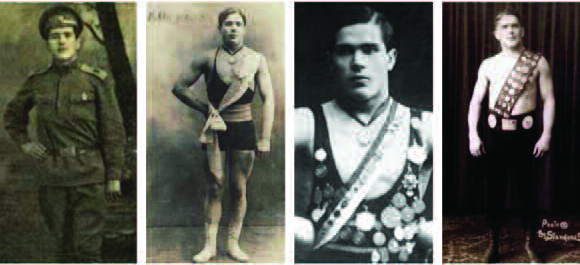by Thomas Latour.
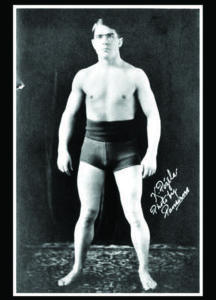
Karolis Požėla died in Chicago, Illinois in 1954. More than 3,000 people attended his funeral. In the 1930s and 40s, Požėla, better known in the wrestling world as Karl Pojello, was a name recognized around the world and familiar to every Lithuanian in Chicago.
He was born in 1893 in Steigviliai, Lithuania (then under Russian tsarist rule) into the Catholic family of Antanas Juozas Požėla and Julija Kersauskaitė-Požėla. Karl was one of seven boys and the second youngest of eight children in the family. He grew up in difficult times – just after the famine in Lithuania, when 20% of the population were emigrating in search of better opportunities. When Karl’s brothers, Antanas and Motiejus, left home and established a pharmacy in St. Petersburg, Russia, 15 year-old Karl joined them.
Wrestler and soldier in Russia
In his pre-teen years Karl had enjoyed acrobatics and wrestling with the older kids and this interest in physical challenges never dissipated. In 1911, at the age of 18, Karl joined the Sanitas Althletic club in St. Petersburg. There, his lifelong love of wrestling became a passion and he began competing. Almost from the start, he began placing well in his bouts and winning championships. Quickly, Karl became known as one of the best wrestlers. Just two years later, in June of 1913, he became the first Russian Olympic champion.
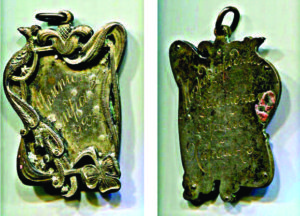
Karl’s wrestling was interrupted in 1914 by World War I, when he was called into Russia’s military service. He saw active duty and was twice wounded in battle. He was shot in the arm, and in 1916 sustained a shrapnel injury in the knee, which ended his time in the military. He was awarded three St. George Cross medals for his service. Even as a soldier, he managed to continue his avocation – whenever he was stationed back in St. Petersburg, he would rest, recover, and wrestle.
After he got out of the military, Karl began wrestling and winning full time. His successes continued and he was placing and winning championships across Russia, Siberia and Mongolia. In 1921-1922 Karl was in China, doing what he did best – winning championships.
He took the opportunity to improve his wrestling skills for 18 months by studying under a Japanese judo instructor. He later accredited this training with changing him from a good wrestler to a top-notch one. In 1923 Karl won a jiu-jitsu competition in Yokohama, Japan and later that year left for the land of opportunity – America.
A successful beginning in the U.S.
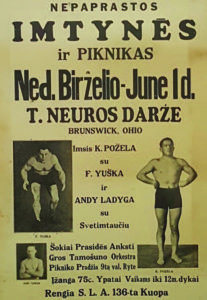
Karl toured the United States, making a name for himself as the Lithuanian wrestling champion. However to make real money, he had to enter the world of U.S. Professional Wrestling. Technical wrestling skill, although very important to professional wrestling, was becoming less important than knowing how to put on a performance for the benefit of the audience. Although Karl was well known for his technical proficiency, he was not yet good at working the crowd. Nevertheless, he became increasingly popular, always representing himself as the Lithuanian champion. Karl never forgot his homeland or his Lithuanian countrymen. In 1924 Karl even collected money to help athletes from Lithuania participate in the upcoming Olympics.
The promoter of Karl’s wrestling career was a fellow Lithuanian, Anthony Tamasiunas a.k.a. Tony Tomasun, who was instrumental in boosting his success. In 1927 Anthony set up a match between Karl and Canadian wrestling champion, Carl Van Wurden. Karl beat Van Wurden in just under three minutes. Just one year later, Karl wrestled and won a match against Johnny Meyers, who was considered the middleweight champion of the world. With these victories, Karl went from being popular, to being famous. Karl’s trajectory towards heavyweight wrestling stardom in the United States was fully underway.
A twist of fate
The year 1931 was a difficult one for Karl. He had a match set up with Sandor Szabo, a very strong contender that the wrestling trust (syndicate) was promoting. This was a match Karl was not supposed to win. However, he pinned Szabo, winning the match and sabotaging a push by the wrestling trust to turn the Hungarian into a champion. This resulted in Karl falling out of favor with the wrestling trust, stopping any chance at a championship belt and effectively destroying his career in the professional circuit.
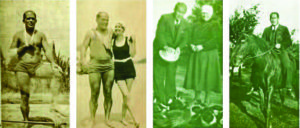
That same year, Karl chipped a bone in his elbow and took nine months off to recover. He went to Europe and soon was wrestling across England, France, Belgium, and Italy. In 1933 Karl became the European champion, defeating the current title holder Heinrich Froehner.
After winning the championship Karl went home to Steigviliai to visit friends and family.
While there, he not only organized some friendly wrestling matches, but also rolled up his sleeves to help bring in the harvest. Later that year, Karl returned to America, booked matches for himself and acted as an independent promoter of other wrestlers.
In 1936 he again returned to Europe, successfully defeating all of the toughest European heavyweight wrestlers. In 1937 he wrestled in the Kings Coronation tournament at Kings Hall, Belle Vue, in Manchester, England. There, Karl won the European Heavyweight championship title. He was 44 years old and on top of the world.
The unlikely start of a unique friendship
In 1937 Karl was walking down a street in France when a man passed him by. Relatively short of stature, with a massive head, neck, chest, hands and feet, the man resembled power incarnate. The man’s disfigurement gave him a slightly monstrous appearance, but Karl was intrigued and did not look away. This was something the man was not accustomed to.
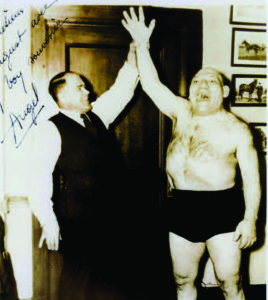
Karl approached the man, discovered they both spoke Russian and started chatting. Thus began an acquaintance that turned into a lifelong friendship. The man was Maurice Tillet, a semi-successful French actor. Karl discovered that Maurice had a passion for sports. He had been a professional rugby player and had wrestled in amateur Greco-Roman wrestling tournaments. Karl convinced Maurice to leave acting and take up wrestling, and immediately started him on a course of training that lasted eighteen months.
In early 1940 Karl convinced Maurice to go with him to the United States. Karl knew that even though amateur wrestling was the best fit for his own technically perfect wrestling skills, the real money was in professional wrestling. In Maurice, he met a fellow Catholic of equivalent kindness, generosity and athletic drive, who had a sense of humor and a unique look that was custom fit for the “show” that was professional wrestling.
He nicknamed Maurice “The Angel” and the wrestler became a sensation in the United States. Karl, as his trainer and promoter, received about one-third of the take. The two men, who remained close friends their entire lives, never had an official contract. Through Karl’s friendship, training and promotion, Maurice rose to the AWA equivalent of the World Heavyweight champion, beating out all the biggest stars of the day. Maurice was a star and Karl had established himself as a world champion trainer and promoter.
Famous trainer, famous clients
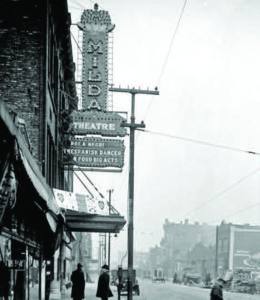
In his dress and demeanor, Karl was best described as an unassuming cross between a lawyer and businessman. He established a gym and training facility called Midwest Wrestling Enterprises for the purposes of in- dependent wrestling training and promotions. It was located at 3142 Halsted St. in Chicago IL. He owned the entire building, including the old Milda Theater.
All the famous persons of Chicago would go to the Theater and gym to meet and talk with Karl and the men and women he worked with. Among these noted wrestlers were Maurice Tillet (The Angel), William J. Bartush (Billy Bartush), Harvey Maurice Evers (Rip Hawk), Don Stansauk (Don Sparrow or Hard-Boiled Haggerty), Angelo Poffo (The Masked Miser), Tony Wayne Osborne (“Tough” Tony Borne) and Barbara Buttrick (The Mighty Atom).
Even in his later years, Karl still loved to wrestle. But he was such a well-known master that he was unable to get wrestling opponents. In his 50’s, he would book gigs under the name of Masked Marvel or Carl Knapp (or Kapp). If he revealed his true name ahead of the match, there was a good likelihood his opponent would quietly disappear.
Friends – together to the end
In their later years, Karl, his wife Olga, and Maurice Tillet were virtually inseparable. They jointly purchased a historic 10,000 square foot mansion at 726 W. Garfield Blvd. in Chicago, known as the O’Leary Mansion. They drew up plans and turned it into a boarding house, arranging to live on the property while renting out rooms.
The men were beloved in Chicago, often hosting parties for the neighborhood. Local school children from the Catholic Visitation elementary school and George Dewey public school would stop in at the mansion and were always made welcome. Karl and Maurice were kind, personable men who enjoyed visiting the schools and instructing the kids in athletics, weight training and wrestling.
By strange coincidence, both men grew ill around the same time. Karl was suffering from lung cancer and Maurice from an enlarged heart. They both had residences on the first floor of their mansion home. On September 4, 1954, at 9:43 a.m., Karl lost his battle with the illness. Olga went to Maurice’s room to let him know that Karl had died. On hearing the news, Maurice indicated that now there was no real reason for him to live. Thirteen hours later, at 11:00 p.m., Maurice died. Karl was 61, Maurice was 51 years old.
The lifelong legacy of a good man
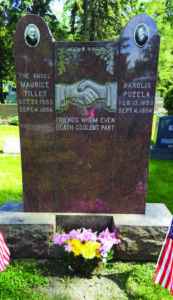
Tony Tomasun, the man responsible for setting Karl on the path to professional success in the US, took responsibility for arranging both men’s funerals. Kostas Augustas from the Lithuanian paper Naujienos (The News) gave Karl’s eulogy. Augustas addressed the crowd of thousands that came to say their final good-byes. He remarked that Karl’s gentlemanly behavior, his kindness and balanced life always served as a positive reflection on the Lithuanian people. Karl set an example of a strong, ethical Christian gentleman for every Chicagoan to admire and appreciate.
Those in attendance at the funeral remembered Karl’s great tolerance and lack of prejudice towards any nationality. A story told by Atholl Oakeley, Karl’s business partner in Europe in the mid-1930s, illustrates Karl’s appreciation of all peoples. It is recounted in Atholl’s book, “Blue Blood on the Mat ‒ The All-In Wrestling Story.” Apparently, Karl and Atholl were at a pub at the top of St. Martin’s Lane in London. A man at the bar announced that he hated all Russians, saying they were all murderers. Karl turned to him and politely asked him not to speak badly about other people. He said that all nations had good and bad people, and no one was bad simply because of their country origin. The man told Karl to leave, which Karl politely declined to do. The man turned to hit Karl with a right-cross. Karl turned into the punch, grabbed the man’s arm, and threw him out the door and into the street. The man lay in the street with a broken arm. Karl went outside and apologized for hurting him. He told the man it was impolite to attack someone who means you no harm. Then he took him to the hospital, and paid his medical fees.
Tomasun buried the two men under a shared headstone bearing the inscription “Friends whom even death couldn’t part.” Tony maintained the gravesite until his death, and his niece, Nina, continues to care for it to this day. Karl was Christian, a gentleman, a champion wrestler, and a man of ethics and conviction. His time in this world leaves a profound and positive imprint on those who knew him, were touched by him and hopefully, on those who now know his history.
Editor’s note. For more info on Karl, see this link: http://death- maskofmauricetillet-theangel.blogspot.com/p/karl-pojella.html
 DRAUGAS NEWS Lithuanian World Wide News in English
DRAUGAS NEWS Lithuanian World Wide News in English
